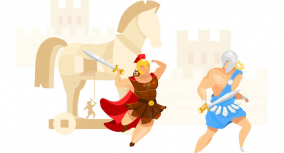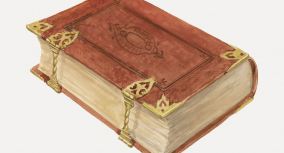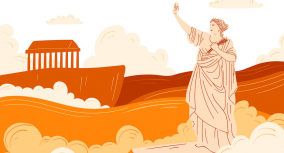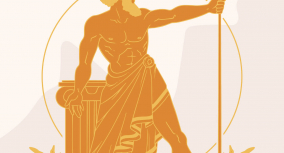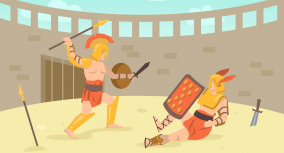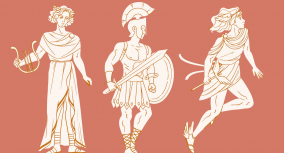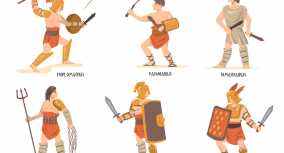Symbols of death in literature are people, objects, or actions with a literal meaning that represent death, dying, and mortality. To convey death symbolism, authors typically use things or creatures, like a raven or a coffin, that signify the end of life. As John Skelton (2018) notes, even death itself can be a symbol, for example, of the decay of society.

This article, crafted by our custom-writing experts, explains symbols of death in literature:
- It defines the key concept.
- It examines things that symbolize death, such as the Grim Reaper, a raven, a clock, a river, and a flower.
- It covers related symbols of mortality, mourning, and rebirth.
- It analyzes death symbolism and imagery in famous literary works: Wuthering Heights, Hamlet, The Odyssey, Othello, Night, Barn Burning, and A Good Man Is Hard to Find.
- It ends with answers to common questions about death symbols.
☠️ Death Symbolism in Literature: Definition
Death symbolism in literature refers to the representation of objects and phenomena associated with mortality. These images convey the idea of life’s fragility, foreshadow tragic events in the plot, or elevate the text’s emotional impact.
Death has been a popular subject of literary works since time immemorial. Numerous symbols related to it can be found in ancient literature, religious texts (such as the Bible,) modern books, short stories, and poetry.
The reason for such popularity of the death theme is the enigma surrounding it. Nobody knows what precedes birth and comes after death, which is why these concepts are covered with creative speculations and guesses.
What Does Death Symbolize in Literature?
Before we start discussing the symbols of mortality, let’s answer the question—what does death symbolize by itself?
Well, depending on the work’s plot, characters, and theme, it may play a range of roles in literature:
- A victory of virtue over vice (or vice versa);
- A betrayal of kindness and humanity;
- A failure of dreams and hopes;
- A reminder of human mortality;
- A symbol of time and decay;
- An act of justice.
As you can see, death itself can serve as a symbol. For example, Lennie’s downfall in Of Mice and Men symbolizes the end of the American dream.
🥀 Symbols of Death in Literature: Common Examples
Now, let’s discuss the most common objects that represent death in literary works. These images are present in stories of different cultures from different times, so they’ve become firmly associated with the concept of mortality.
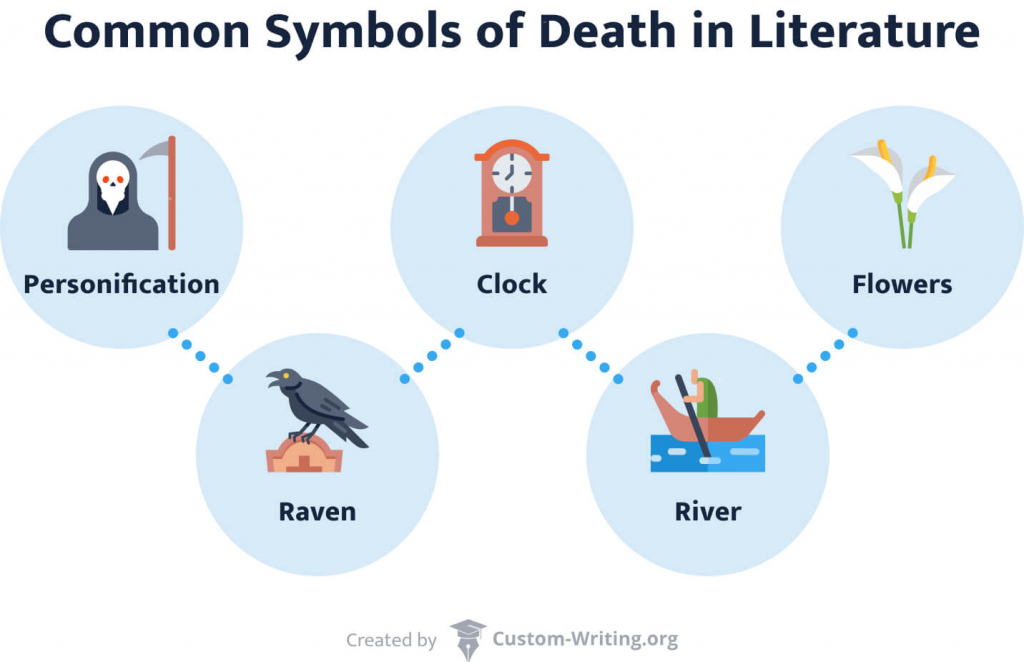
Personification of Death in Literature
Some authors introduce death as a character, thus assigning its powers to human-like creatures. They’re typically tasked with taking the souls of the deceased to the underworld.
Various types of such characters are present in ancient Greek, Egyptian, and Celtic mythology. One example is the Greek god Thanatos. He was rarely depicted in sculptures or paintings but often referenced in literature as the underworld’s guardian and humans’ guide in the afterlife (you can read more about Thanatos on Greekmythology.com.)
Popular death personifications in the modern literature include:
- The Grim Reaper: a universal death symbol used in popular culture, rock music, and even fashion. It comes in the form of a skeleton wearing a cloak and holding a scythe in its hands.
- Angel of death: another popular image personifying death is an Abrahamic angel (Azrael) collecting the deceased people’s souls.
The famous novel The Book Thief features death as one of the principal characters. He witnesses the atrocities of World War II and reflects on the magnitude of human violence, adding an original perspective to the plot.
Raven Symbolism in Literature
A raven is another well-known image used to represent death symbolically. Thanks to the works of Edgar Allan Poe, crows and ravens have acquired a negative connotation as gloomy ushers of violence and bloodshed. The epic poetry of many cultures has images of ravens appearing in places of bloody battles. These birds also foreshadow tragic news in many fictional works.
Symbolism of Clock in Literature
A deep-rooted connection between the clock and death is the countdown of time. All people have a specific lifetime, which ends with death, and nobody knows how much time is left for them on Earth. That’s why an appropriately introduced image of a clock symbolizes the inevitably approaching death. We can find one such example in Emily Dickinson’s poem A Clock Stopped.
Rivers in Literature Symbolism: Life to Death Transition
Rivers in literature symbolize the passage of time. So, they’re associated with life and death in equal measure. Ancient people considered rivers divine and even had gods personifying them. Crossing the river is also symbolic: it represents a life transition or death.
Flower Symbolism in Literature: Death Meanings
Flowers have also found their place in death symbolism. Blossoms grow fast, and their decay follows quickly. That’s why they are often used as a metaphor for life’s brevity and fragility, such as Ophelia’s flowers in Shakespeare’s Hamlet. Lily is a globally recognized death flower, with other examples including Chrysanthemum, Monkey Orchid, and Gladiolus.
🕯️ Death in Literature: Related Symbols
As you may have guessed, death is not a singular image in literature. Related events and concepts also deserve insightful analysis, such as the very concept of mortality and mourning about the loss.
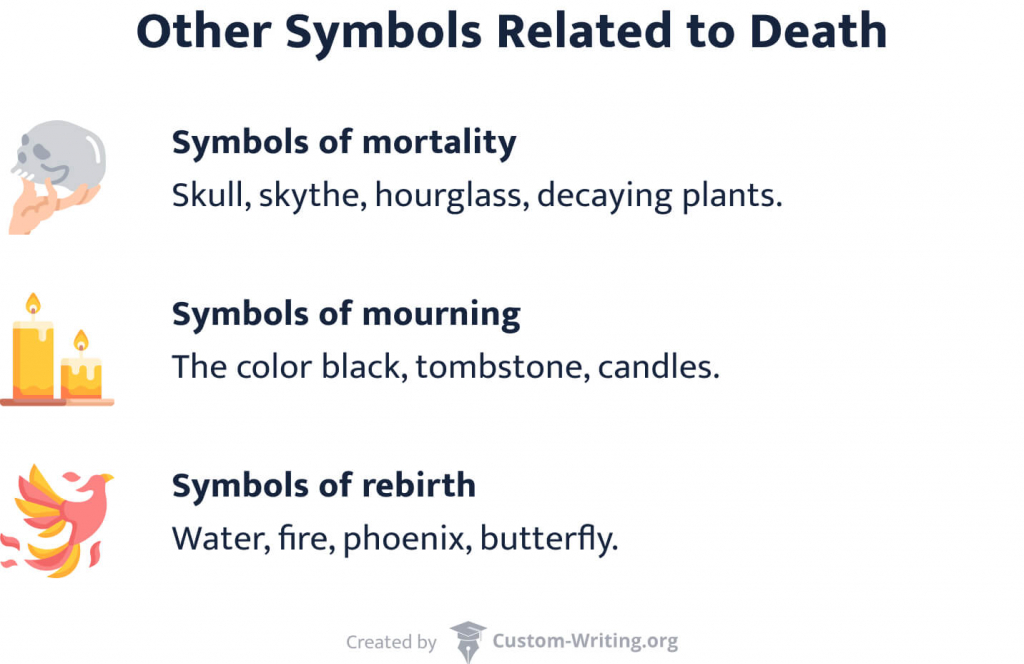
Symbols of Mortality in Literature
Many “memento mori” symbols in human culture serve as ever-present reminders of life’s brevity and the inevitability of death. Popular symbols of mortality are scythe, hourglass, and decaying fruit or flowers.
However, the most famous symbol is a skull, which embodies an encounter between a living and a dead person. Shakespeare skillfully used this symbol in Hamlet, denoting life’s fragility and futility.
Symbols of Mourning in Literature
The color black is a universal symbol of mourning worldwide (except for Asia, where white is the color of death—check out this chart by ThoughtCo to learn more about color meanings in different cultures.)
Thus, people in mourning wear black clothing, and women cover their heads with black veils to express their grief. A well-known symbol of mourning is the black cloud of sorrow in The Iliad, symbolizing the magnitude of grief filling people after Achilles’s death.
Another well-recognized symbol of mourning is a tombstone; it’s a monument keeping the deceased person’s memory alive. Candles are often associated with mourning, as they are burnt at funerals and church sermons. In many cultures, lighting a candle for a deceased person means bridging the gap between the living and the dead.
Rebirth Symbolism in Literature
In literature, death is not always the end of a person’s life. Some heroes die to come back in a different form, which is called rebirth.
The most popular symbols of rebirth are fire and water. Characters can go through spiritual cleansing and return to the world of the living after the trials they undergo. Examples can be found in The Old Man and the Sea, Moby-Dick, and Lu Hersey’s Deep Water.
Other recognizable symbols of rebirth are that of a phoenix (a symbol of Christ in ancient literature which was also prominently used in Harry Potter) and a butterfly.
📚 Death Symbolism in Literature: Examples
Now, it’s time to look at death symbolism in practice. Let’s analyze its use in some of the world’s greatest novels, plays, stories, and poems.
Wuthering Heights: Ghosts Symbolism
Wuthering Heights is the only officially published novel by Emily Bronte, which saw the world in 1847. It’s a refined story telling a turbulent and complex family saga of two West Yorkshire dynasties: the Earnshaws and the Lintons. A troubled passion and lifelong love between Catherine Earnshaw and Heathcliff, her adoptive brother, is one of the story’s focal points.
After Catherine’s death, her ghost haunts Heathcliff, who went the extra mile to revenge for his low status and Catherine’s neglect. However, upon Catherine’s death, Heathcliff refuses to reconcile with that loss and begs Cathy to stay with him in any form:
Be with me always – take any form – drive me mad! only do not leave me in this abyss, where I cannot find you! Oh, God! it is unutterable! I can not live without my life! I can not live without my soul!
Wuthering Heights, Heathcliff, Chapter XVI
Catherine’s ghost is a symbol of a lost soul, one that made wrong decisions during her lifetime and could not find peace after death. The relentless character of Heathcliff also brought much trouble to his later years and gave him no peace. In the end, Wuthering Heights’ residents started noticing not one, but two ghosts wandering in the fields.
In Bronte’s novel, ghosts seem to represent haunting memories and unsettled conflicts and relationships of the past. There are also many other symbols that you can read about in our Wuthering Heights analysis.
Hamlet: Skull Symbolism
The skull appears in Shakespeare’s Hamlet during a playful scene with two gravediggers. Some experts state that the playwright used this episode to achieve comic relief. However, the presentation of the skull has more serious underlying intentions.
The skull is an example of “memento mori” symbolism: to be precise, it foreshadows the upcoming deaths in the play. Hamlet holding the skull reflects on the futility of life and recollects his time spent with a living person who is now nothing more than a skull in the ground.
Alas, poor Yorick! I knew him, Horatio, a fellow of infinite jest, of most excellent fancy. He hath borne me on his back a thousand times, and now, how abhorred in my imagination it is!
Hamlet, Hamlet, Act 5, Scene 1
This monologue instills the sense of approaching death’s inevitability and sets the audience in the right mood for further tragic events. Want to learn more about them? Check out our Hamlet summary page.
Penelope’s Shroud Symbolism in The Odyssey
The shroud that a character of The Odyssey, Penelope, weaves for her father-in-law Laertes is another instance of foreshadowing. In this episode, often underappreciated by analysts, Penelope applies her wit in a world dominated by men, thus getting her way through. She has managed to trick the assertive suitors for over four years, weaving the shroud in the daytime and secretly unweaving it at night.
The most intriguing and impressive about the shroud story is that it eventually becomes the burial shroud for Laertes; in this way, Penelope could have unknowingly predicted Laertes’ death or called it to come. The quote below also illustrates the symbolic meaning of respectful cover for the deceased as a part of the ancient burial tradition.
Young men, my wooers, since godlike Odysseus is dead, be patient, though eager for marriage, until I finish this garment—lest my threads perish useless—a shroud for the hero Laertes, against the time when the baneful fate of pitiless death shall strike him down; lest any of the Achaean women in the land blame me, if he, who had won great possessions, were to lie without a shroud.
The Odyssey, Penelope, Book 2
Want to know more? See our guide on symbols in The Odyssey.
Othello: Willow Song Symbolism
There’s hardly anyone who doesn’t know the sad story of murder and betrayal written by William Shakespeare. The wicked Iago leads his chief Othello to believe that his wife is unfaithful, which leads to her tragic death. It is foreshadowed by The Willow Song—a folk ballad about lost love sung several times throughout the play.
The Willow Song of Desdemona ends with the following words:
“Take this for my farewell and latest adieu…
Write this on my tomb, that in love I was true…”
The song is mentioned in relation to death several times in the play:
- Desdemona learned the song from her mother’s maid, who died singing it.
- Emilia, Iago’s wife who tried to prevent the tragedy and was stabbed by Iago for those efforts, sang the song when dying.
Thus, the song foreshadows the scene of Emilia’s and Desdemona’s cruel murders. You can learn more about them from our Othello characters guide.
Death Symbolism in Night by Elie Wiesel
Night by Elie Wiesel is a celebration of death, with numerous symbols and direct depictions of the deadly force of Nazism. The book tells a story of a boy’s experiences in a concentration camp for the Jews, so it’s a heartbreaking story of human life and death.
The central death symbol in the book is the night—the absence of light associated with the darkness of human soul. The world that Wiesel depicts has no place for pity, kindness, and humaneness. Cruel and violent Nazis rule it, so it’s a world without God.
Wiesel also included many symbols of death relevant to God as his symbolic loss of faith amid the Nazi nightmare and the inner death because of witnessing human suffering. You can learn more about it in our guide on symbols in Night.
One day when I was able to get up, I decided to look at myself in the mirror on the opposite wall. I had not seen myself since the ghetto. From the depths of the mirror, a corpse was contemplating me. The look in his eyes as he gazed at me has never left me.
Night, Narrator, Chapter 9
Barn Burning: Symbolism of Death
The story Barn Burning is an impactful short story written by William Faulkner, the one that laid the basis for the Snopes trilogy. These works examine the class conflict and vengeance on the example of the Snopes family, where Abner Snopes can’t cope with his inferior class position and burns his employers’ barns.
The central symbol of death in that story is fire. It’s a popular symbol used in various ways in literature, as it can both support life by warming people and become a destructive force. In this story, fire is a deadly force that Abner applies to treat social injustice because he has no other tools to remedy the situation. The very description of Abner is filled with a destructive force and looming death:
There was something about his wolflike independence and even courage when the advantage was at least neutral which impressed strangers, as if they got from his latent ravening ferocity not so much a sense of dependability as a feeling that his ferocious conviction in the rightness of his own actions would be of advantage to all whose interest lay with his.
Barn Burning, Narrator
Check out our article on Barn Burning symbols to learn more about this topic.
Death Symbolism in A Good Man Is Hard to Find
A Good Man Is Hard to Find is one of the most famous short stories by Flannery O’Connor. It tells a story of a family traveling to Florida and coming face to face with an escaped convict, dying due to that encounter.
The author used many symbols of death to foreshadow the unfortunate meeting: the image of the graveyard that the family passes by at the beginning of the story; the Misfit’s car described as the “big black battered hearse-like automobile.” Many other symbols were used to signal the approximating death of the whole family, which you can learn about in our guide on symbolism in Good Man Is Hard to Find.
“Jesus was the only One that ever raised the dead,” The Misfit continued, “and He shouldn’t have done it. He thrown everything off balance.”
A Good Man, The Misfit
Now you’re well-tuned to the literary analysis of death symbolism in various works. Use our tips and interpretation approach to ace your next assignment and please your professor with insightful research.
❓ Death Symbols
What Does the Ebony Clock Symbolize in “The Masque of the Red Death”?
The ebony clock in Edgar Allan Poe’s short story symbolizes death, as it’s black and stands in the black and red room (both colors are closely associated with death). It counts down the time the guests have left. Every time it strikes a new hour, the partying crowd freezes, realizing they have less time.
What Is Used a Symbol for Death in “Anyone Lived in a Pretty How Town”?
Cummings’ poem features a bell tower, which is a central symbol of life and death in this literary work. In the final lines, the poet compares women and men to the “ding and gong” of the bell, thus hinting at the birth, life, and death processes happening over time.
What Does Lennie’s Death Symbolize?
Lennie’s death stands for the failure of the American dream in the novel “”Of Mice and Men,”” as Lennie and George cherished a dream to get to the farm, which finally failed. As George has to kill Lennie with his own hands, Lennie’s death also symbolizes the death of friendship ideals.
What Does Piggy’s Death Symbolize?
Piggy’s death in “Lord of the Flies” is a symbolic turn, marking the dominance of violence and cruelty over the voice of wisdom and common sense. William Golding uses foreshadowing to usher Piggy’s death from the very start when Piggy tells about his poor eyesight, allergy, and inability to swim.”
🔍 References
- Death in Literature: Research Gate
- Death and Dying in Literature: John Skelton
- The Darkest, Most Foreboding Symbols of Death: Thought Catalog
- Flowers in Mythology: Encyclopedia.com
- Where Does the Concept of a “Grim Reaper” Come From?: Britannica
- Shakespeare’s Saddest Song: Shakespeare.org
- Conventional Symbols in Literature: Deer Valley Unified School District
- Can Novels Change Our Attitudes About Death?: Electric Literature
- 7 Books with Death as a Character: Barnes & Noble
- Symbols of Death and Life: JSTOR
- Art Symbols Dictionary: Death: Liveabout



